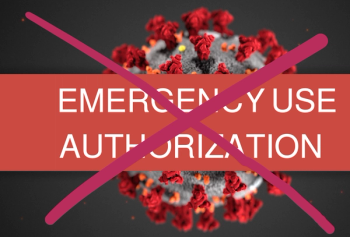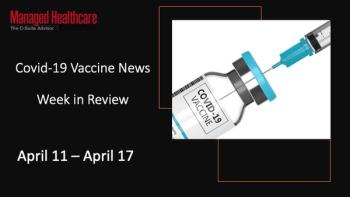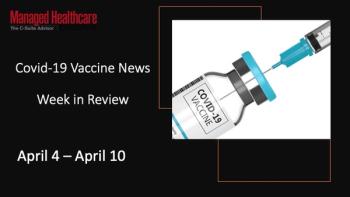
A Medicare Advantage group and other organizations are endorsing legislation that would allow data collected during audio-only visits to be used to set risk adjustment payment levels to MA plans.

A Medicare Advantage group and other organizations are endorsing legislation that would allow data collected during audio-only visits to be used to set risk adjustment payment levels to MA plans.

The combination monoclonal antibody treatment of bamlanivimab and etesevimab still OK.

Automated texts may also lessen the workload on nurses.

Brooks, senior medical director of Independence Blue Cross in Philadelphia, was a key member of the team that created a health awareness campaign launched earlier this month in cooperation with local radio station WURD and other partners including the Colorectal Cancer Alliance, the Independence Blue Cross Foundation, Penn Medicine, Labcorp, and the Health Care Improvement Foundation. The campaign, called “Go To Know,” sets out to increase colon cancer screenings among African Americans by providing free Fecal immunochemical, or FIT, tests.

A new survey revealed a majority of health organizations have lack of awareness and are unprepared to comply with the ONC's final rule act of information blocking and improving interoperability provisions. Matthew A. Michela, President and CEO, Life Image, shares how to get on board.


In this third part of a three-part series, Steven D. Pearson, M.D., M.Sc., founder and president of ICER talks the drug Inclisiran and its relation to PCSK9 inhibitors.

A recent survey by Scripta Insights shows 96% of consumer are willing to make a prescription change as far as switching their medications, forms and where they fill in order to save money.

The number of participants in the Medicare Shared Savings Program has tapered off, and the Direct Contracting Model may put accountable care organizations at a disadvantage. The National Association of ACOs wants the Biden CMS to make some changes.

In this second part of a three-part series, Steven D. Pearson, M.D., M.Sc., founder and president of ICER addresses if pricing of PCSK9 inhibitors put ICER on the map.

Burnout among nurses has been a major pain point for hospitals and health systems long before COVID. Nurses work long hours and face a unique combination of physical and emotional challenges, and a seemingly simple mistake can be fatal. As a result, burnout rates among nurses range from 15% to 45%, leading 1 in 3 nurses to leave the bedside within their first two years.

The triptans, long the workhorses of migraine treatment, have been joined by monoclonal antibodies and small-molecule drugs that block calcitonin gene-related peptide. What’s lacking is a precision approach to treatment based on biomarkers.

In this week’s episode of Tuning In to the C-Suite podcast Briana Contreras, associate editor of Managed Healthcare Executive, spoke with David Lareau, CEO of Medicomp Systems about four areas that must be addressed to improve the usability of health IT, address interoperability issues, and minimize clinician burden.

The new approval expands the drug's indication to include treatment in adult patients with unresectable locally advanced or metastatic triple-negative breast cancer.

Whether the cup of value-based care is half empty or half full may depend on your point of view. But the grail certainly isn’t full. Some of the leading lights at the Leonard Davis Institute (LDI) of Health Economics at the University of Pennsylvania have released recommendations to hasten the volume-to-value healthcare transformation.

Two common antidepressant and antifungal drugs were very effective at inhibiting SARS-CoV-2, the virus that causes COVID-19, according to a new study.

A couple of years ago, there was a lot of chatter about the Amazonifcation of healthcare. Well, that hasn’t happened. But the company is breaking into a sector of the economy that accounts for almost 18% of the American gross domestic product. Perhaps healthcare’s journey of Amazonifcation has started but is going step by step.

The Biden administration put a hold on the new and pending rule changes that the outgoing Trump administration made, so whether the Medicare Coverage of Innovative Technology pathway will ever take effect is uncertain. But many providers and payers — and presumably most device makers — are keeping a close watch on the fate of the pathway.

Recent report from Syft highlights hospital supply chain challenges at the point-of-use and key areas that need improvement.

To remain relevant in managed care, adoption of EHRs are crucial for outpatient surgery. Included are four reasons it's essential for surgery centers to adopt.

In this first of a two-part article series, Curtis Gattis, CEO and co-founder of LeadingReach, discusses how healthcare organizations participating in risk-based contracting or value-based financial and care delivery models are currently facing major challenges with integrating, managing and tracking care coordination and communication capabilities within provider networks.

3 minutes is all the time it takes to complete.

More than a half million Americans have taken advantage of the Biden administration’s new health insurance keyed to the COVID-19 pandemic.


Real-world evidence (RWE) has the potential to be a transformative tool for healthcare providers to enhance the care they deliver to patients.

Significant attention has been paid to the recent surge in telehealth. This attention is valid. While usage of telehealth has declined from the initial months of the pandemic, FAIR Health data show that telehealth claim lines had increased more than 2,800% nationally from December 2019 to December 2020.

Nod from FDA comes as drugmakers are withdrawing indications for cancer drugs that were also approved an accelerated basis.

Most are in the riskier global risk track with 100% savings and losses.

In this final video of three-part video interview series, MHE spoke with founder and CEO of Gray Matter Analytics. In the discussion, Sheila addressed the topic of how healthcare organizations are missing out by not actively expanding their efforts to seek out and fast track talented individuals across many minority populations, especially in the c-suite.

As COVID-19 cases in nursing homes decline rapidly, the healthcare industry calls on congress to take on needed reform to address systemic issues facing industry.